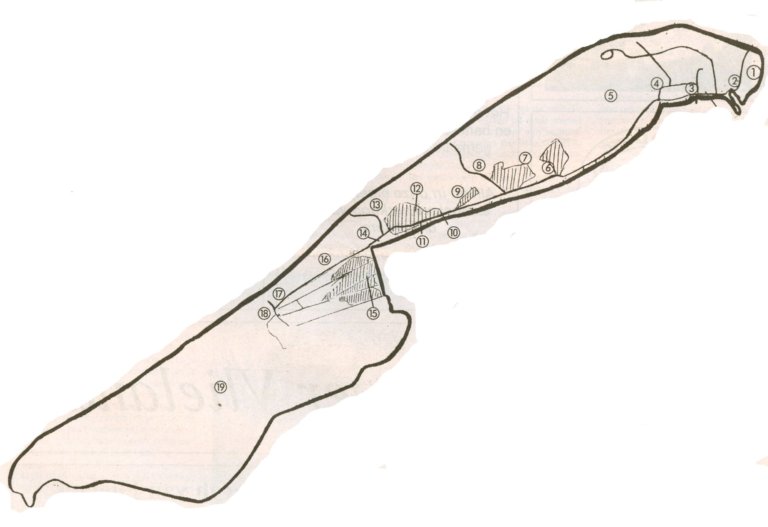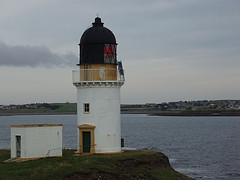
1 - Noordoosthoek / Northeastern Corner
2 - Viewpoint, used in years gone by to spot incoming shipping
3 - Village, Oost Vlieland / East Vlieland. The village of West Vlieland was taken by the sea in 1736, and now lies a few miles west of the Vliehors (19)
4 - Vuurboetsduin / Fireshed Dune - Highest point of the island (40 m / 133 ft), with great views over the adjacent sea areas and the neighbouring islands of Terschelling and Texel
5 - Kooispleklid. An area of dunes, rising to 30 m / 100 ft above sealevel, also comprising an area of marshland
6 - Lange Paal / The Long Pole. Refers to a reference mast for the Dutch survey service that used to stand there. Also features a Forestry Commission campsite
7 - Nieuwe Kooi. A small plantation with a pond, which was to have been used for luring ducks using decoys (hence the name).
8 - Pad van 20 / Path of 20. A wider shell-paved track, linking the main road to the western beach near Dam 20. The dune area west of this track is not accessible during the bird nesting season (March 15th to August 1st).
9 - Oude Kooi. This is the oldest forestry plantation on the island, planted in 1898 with the duck lure pond. Until the Second World War, wild ducks were caught here. This is the 3rd forest from the village.
10 - Dodemansbol / Dead Men's Dune. Those who were put ashore with contagious diseases (or having died of them) were buried in this dune. Burial in local cemeteries was not permitted.
11 - Sailors' Grave. The above burial site.
The memorial reads:
Here rests the dust from days gone by
Interred in a wooden chest
Please bear honour to this resting place
As such is duty and human both
12 - Bomenland / Treeland. The last forest, through which the road runs, is an old plantation, dating back to 1903-6.
13 - Pad van 6 / Path of 6. The road linking from the Posthuys across the narrowest part of the island to the beach at Dam 6.
14 - Posthuys used to be a stagepost for the mails, coming up from Amsterdam through Texel. It is a restaurant nowadays.
15 - Kroonspolders were reclaimed from the sea between 1900 and 1930, and serve as a bird and nature reserve.
16 - Meeuwenduinen, south of the Posthuys, serve a breeding territory for the gulls.
17 - Reddingbootpad / Lifeboatpath - is the last passage from the North Sea beaches to the main road. There used to be a lifeboat station at the Posthuys,from where the lifeboat would be launched.
18 - Kamp / Barracks: An army barracks, dating back to 1958. Military exercises take place on the adjacent Vliehors on weekdays.
19 - Vliehors. The largest part of the island, it is a large sandbar, which is only accessible during the weekend. Please beware of quicksand and unexploded ordinance.

1 comment:
Interesting reading Guido.
I haven't had time yet to look at your photos. :(
Playing catchup a bit today, as usual.
The quicksand and unexploded ordinance sounds a bit worrying!!!!
Take care
Hugs
Carolxx
Post a Comment